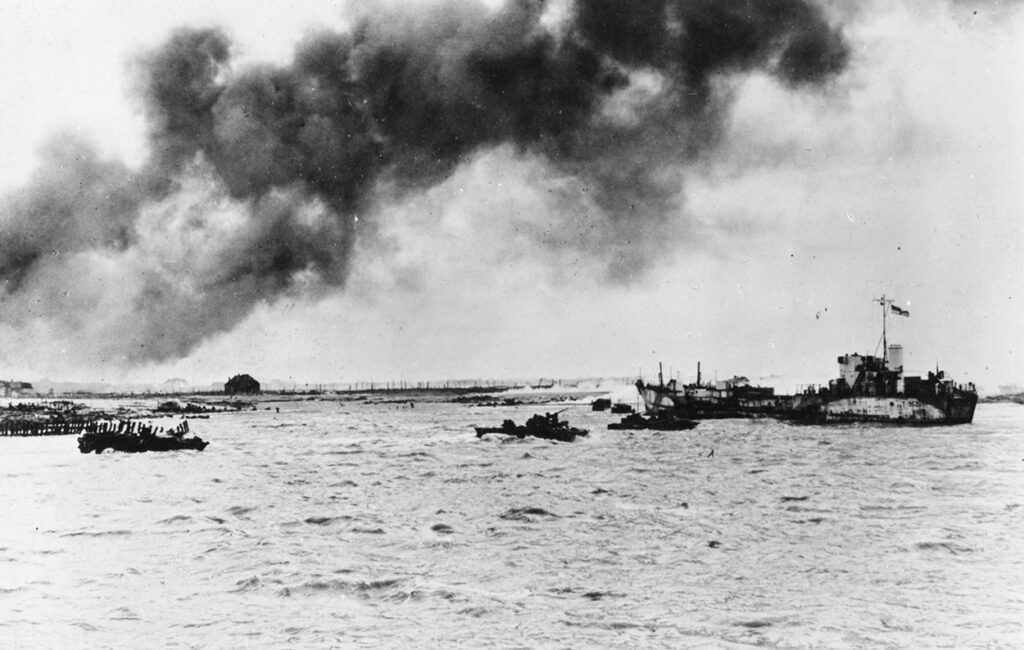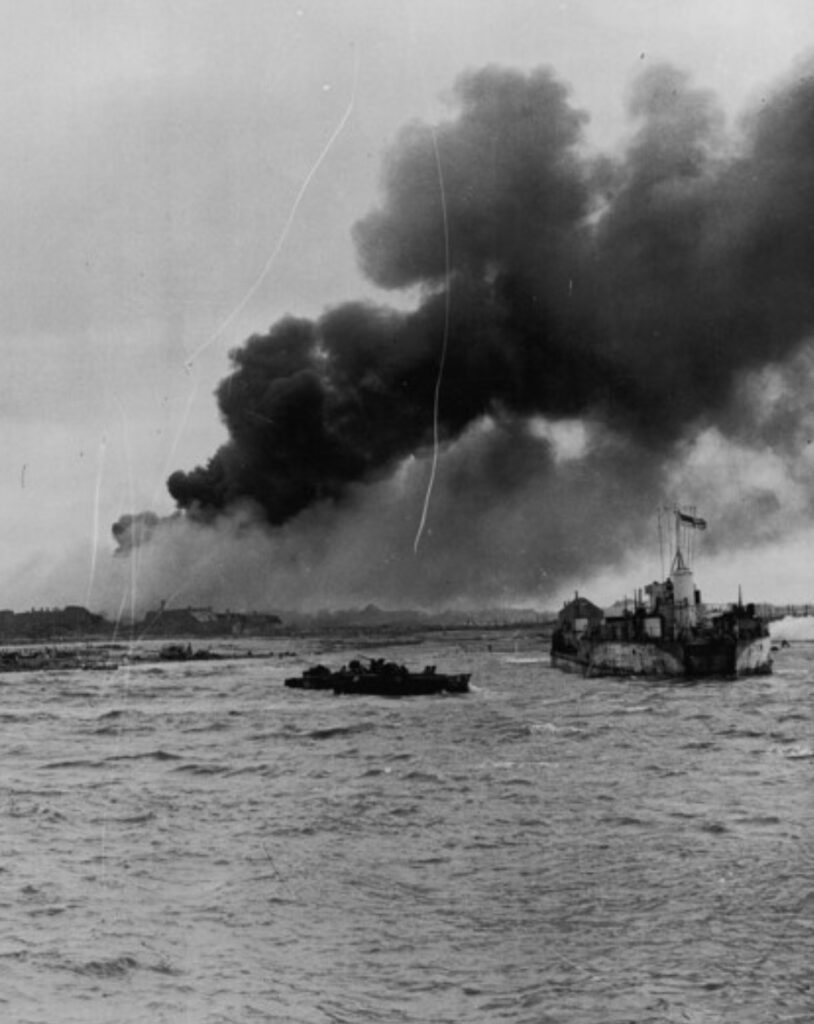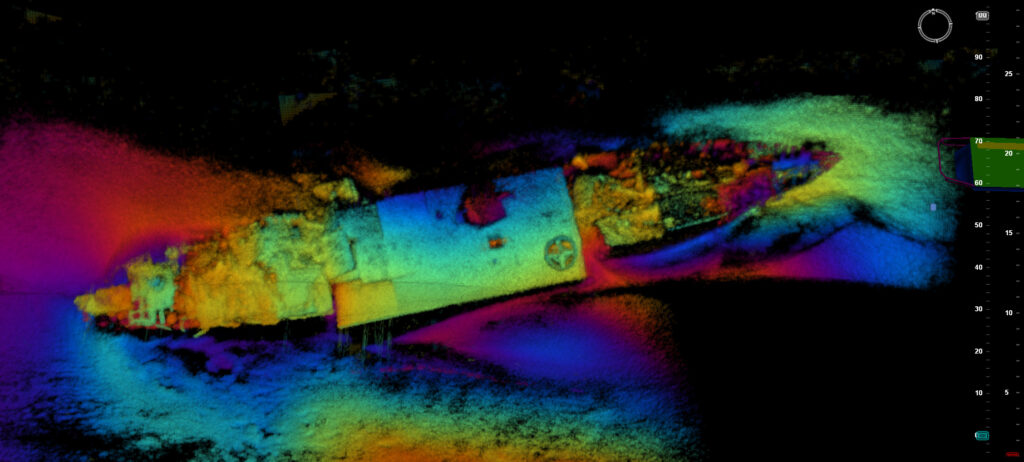No products in the cart.


Allied fire on Westkapelle
At 08:20 a.m. on November 1, 1944, the Warspite and Roberts open fire on German coastal batteries W13 and W15. A landing fleet approaches the beach but comes under heavy fire. Two Landing Craft Gun (Medium) – LCG(M)-101 and LCG(M)-102 – must secure themselves on the shore to provide fire support.
Heroic struggle and sacrifice
The LCG(M)-102 runs ashore exactly as planned, but is hit immediately. As the ship opens fire on the German positions, the commander and a sailor are fatally hit. The badly damaged ship drifts and sinks 800 meters from shore.
The LCG(M)-102 and other support ships draw enemy fire toward them, allowing the naval commandos to land. Of the 25 ships in the Support Squadron, only five survive without damage. Nine ships sink, 172 crewmen are killed and 286 are wounded. Within two hours, the mission is complete: Walcheren is attacked, and the Allies have a foothold.
The LCG(M)-102 and other support ships draw enemy fire toward them, allowing the naval commandos to land. Of the 25 ships in the Support Squadron, only five survive without damage. Nine ships sink, 172 crewmen are killed and 286 are wounded. Within two hours, the mission is complete: Walcheren is attacked, and the Allies have a foothold.

The wreckage of the LCG(M)-102
The wreck of the LCG(M)-102 still lies upright in the Oostgat near buoy OG13, at a depth of 15 meters. Parts of the ship, including the deck and anchor, are still easily recognizable.
Silent witnesses
-
A barrel of a 17-pounder gun from the LCG(M)-102 was recovered by the Dishoek Divers and is on display at the Liberation Museum Zeeland.
-
The Oerlikon 20mm anti-aircraft gun that once stood on the bridge of the LCG(M)-102 is now on display outside near the museum.
-
Underwater, parts of the ship remain visible, including the collapsed bridge and an open ammunition magazine.
The wreck of the LCG(M)-102 is a war grave and a silent witness to the fierce battle for the liberation of Walcheren.


